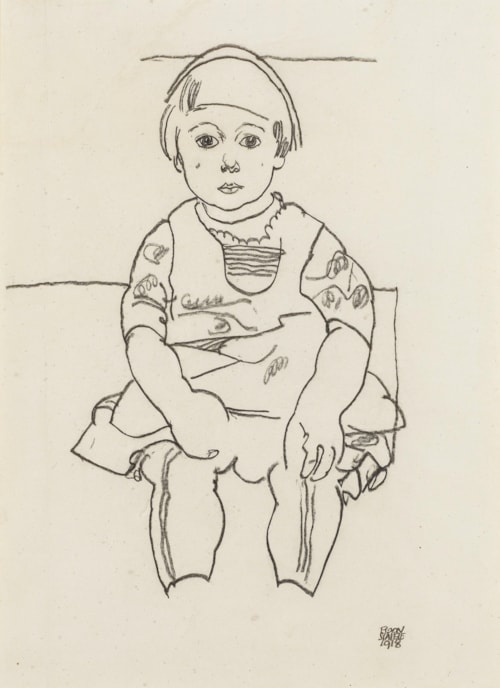
Egon SCHIELE
Tulln 1890 - Vienna 1918
Biography
In a brief artistic career that lasted just twelve years, Egon Schiele produced a few hundred paintings and nearly three thousand drawings and watercolours. Born in the town of Tulln, on the Danube river northwest of Vienna, Schiele drew obsessively from an early age. In 1906, he was accepted at the Akademie der Bildenden Künste in Vienna, where at sixteen years old he was the youngest student. The following year he met the prominent artist Gustav Klimt, who was to become a friend and mentor, and whose stylistic influence is noticeable in Schiele’s works of 1908 and 1909. In 1908 he exhibited his work in public for the first time, and the following year, at the invitation of Klimt, sent four paintings to the Internationale Kunstschau. The same year Schiele was one of several young artists who left the Academy and established the Neukunstgruppe (New Art Group), exhibiting their work at the Kunstsalon Pisko in Vienna. Through this exhibition Schiele met several important collectors and art critics, who began to acquire and promote his work. He also began to establish a reputation as a portraitist, and received a number of portrait commissions, although he nevertheless continued to struggle financially. After his first solo exhibition in Vienna in 1911, Schiele settled outside the city, eventually living in the village of Neulengbach. In 1912 he was arrested there on charges of kidnapping and rape of a minor – one of several village children who had posed for the artist - and was imprisoned for over three weeks. The artist was eventually acquitted of the charges of kidnapping and rape, but was found guilty of public immorality on account of the indecent imagery of some of his drawings.
After his release from prison Schiele returned to Vienna, and his work took on a less overtly erotic tone, with allegories, landscapes and urban scenes becoming more prominent, alongside portraits. He began to exhibit his work widely throughout Germany, and also began experimenting with printmaking. Drafted into the Austrian army in May 1915, Schiele’s poor health meant that he was assigned office duty, serving in a suburb of Vienna where he was tasked with guarding Russian prisoners of war. His work continued to be exhibited, however, although his output lessened. In 1917 he was transferred to a supply depot in Vienna, where he was able to live at home and continue to paint. It was not until the last year or so of his life that he began to achieve a modest amount of financial success. With the critical and financial success of his one-man exhibition at the Vienna Secession the following month, when every one of his works was sold, Schiele’s reputation was secured. By the final months of the First World War, and following the death of Gustav Klimt in February 1918, Schiele had become established as the leading avant-garde artist in Vienna. Sadly, this late taste of success was short-lived, as the artist died in October 1918 at the age of just twenty-eight, a victim of the worldwide Spanish flu pandemic.



